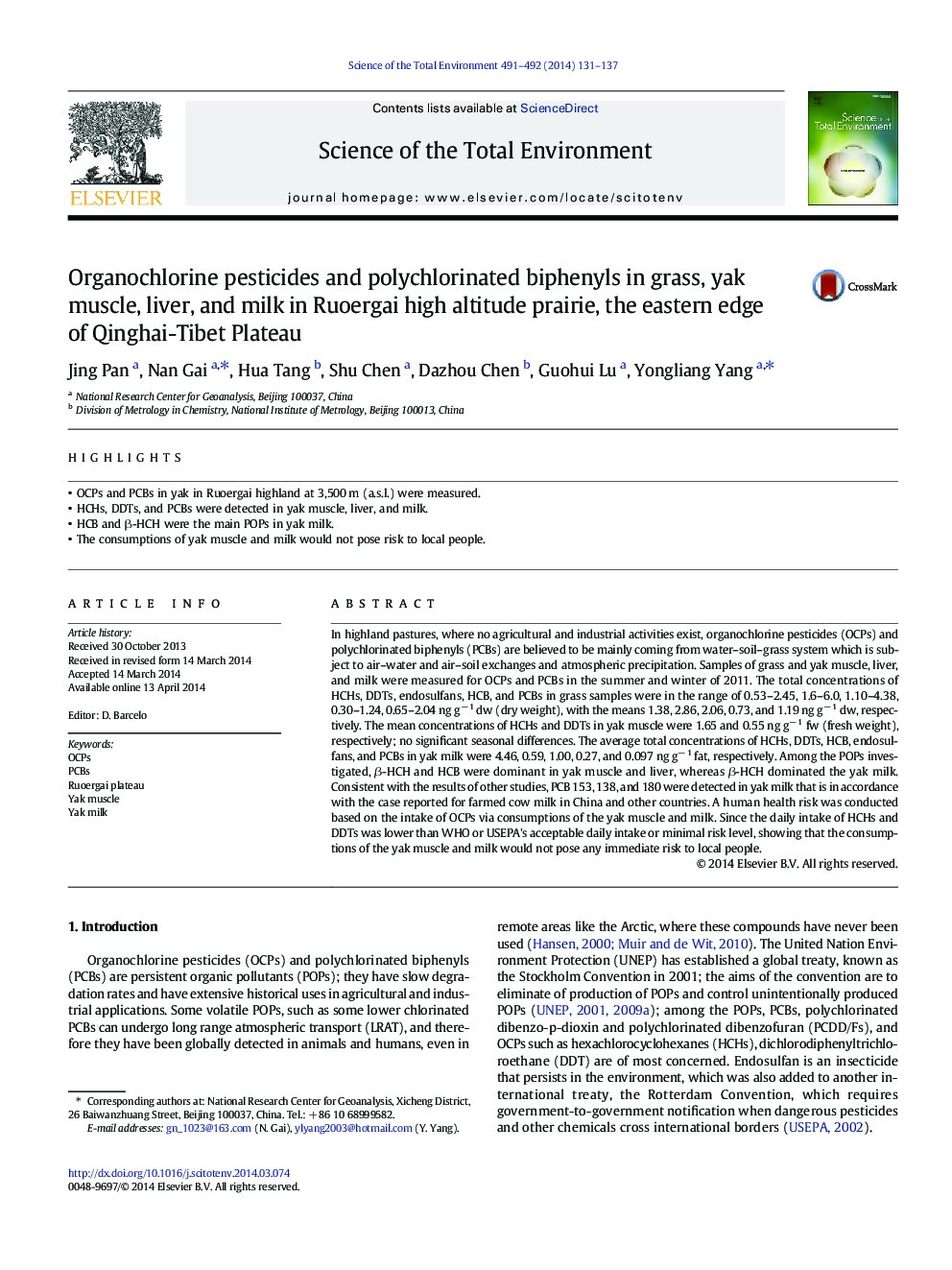| کد مقاله | کد نشریه | سال انتشار | مقاله انگلیسی | نسخه تمام متن |
|---|---|---|---|---|
| 4428461 | 1619779 | 2014 | 7 صفحه PDF | دانلود رایگان |
• OCPs and PCBs in yak in Ruoergai highland at 3,500 m (a.s.l.) were measured.
• HCHs, DDTs, and PCBs were detected in yak muscle, liver, and milk.
• HCB and β-HCH were the main POPs in yak milk.
• The consumptions of yak muscle and milk would not pose risk to local people.
In highland pastures, where no agricultural and industrial activities exist, organochlorine pesticides (OCPs) and polychlorinated biphenyls (PCBs) are believed to be mainly coming from water–soil–grass system which is subject to air–water and air–soil exchanges and atmospheric precipitation. Samples of grass and yak muscle, liver, and milk were measured for OCPs and PCBs in the summer and winter of 2011. The total concentrations of HCHs, DDTs, endosulfans, HCB, and PCBs in grass samples were in the range of 0.53–2.45, 1.6–6.0, 1.10–4.38, 0.30–1.24, 0.65–2.04 ng g− 1 dw (dry weight), with the means 1.38, 2.86, 2.06, 0.73, and 1.19 ng g− 1 dw, respectively. The mean concentrations of HCHs and DDTs in yak muscle were 1.65 and 0.55 ng g− 1 fw (fresh weight), respectively; no significant seasonal differences. The average total concentrations of HCHs, DDTs, HCB, endosulfans, and PCBs in yak milk were 4.46, 0.59, 1.00, 0.27, and 0.097 ng g− 1 fat, respectively. Among the POPs investigated, β-HCH and HCB were dominant in yak muscle and liver, whereas β-HCH dominated the yak milk. Consistent with the results of other studies, PCB 153, 138, and 180 were detected in yak milk that is in accordance with the case reported for farmed cow milk in China and other countries. A human health risk was conducted based on the intake of OCPs via consumptions of the yak muscle and milk. Since the daily intake of HCHs and DDTs was lower than WHO or USEPA's acceptable daily intake or minimal risk level, showing that the consumptions of the yak muscle and milk would not pose any immediate risk to local people.
Journal: Science of The Total Environment - Volumes 491–492, 1 September 2014, Pages 131–137
